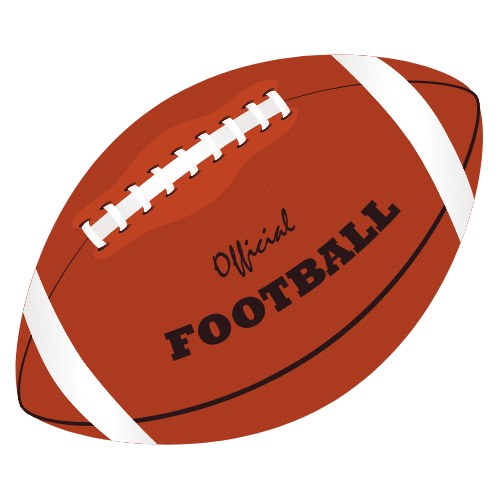Rule 3 - Periods, Time Factors and Substitutions
SECTION 2. Playing Time and Intermissions
Article 1 - Length of Periods and Intermissions
The normal total playing time in a game shall be 48 minutes, divided into four periods of 12 minutes each, with one-minute intermissions between the first and second periods (first half) and between the third and fourth periods (second half) (Exception: A one- minute intermission between the first and second and the third and fourth periods may be extended for radio and television timeouts).
Competitions or national federations may adopt regulations to set the maximum playing time in a game to 60, 48, 40 or 32 minutes, provided the four periods are of equal length.
a. No period shall end until the ball is dead and the referee declares the period ended [S14].
b. The intermission between halves shall be 20 minutes, unless altered before the game by mutual agreement of the administrations of both teams and the competition authority. Immediately after the second period ends, the referee should begin the intermission by signalling to start the game clock [S2].
c. It is strongly recommended that game management schedule the kickoff time no later than four hours before darkness (defined as the time of local sunset or the time at which any artificial lights must be switched off).
d. If a game (delayed by five or more minutes) kicks off less than 3½ hours before darkness, playing time shall be limited to a maximum of 48 minutes. (A.R. 3-2-1:I)
e. If a game (delayed by five or more minutes) kicks off less than 3 hours before darkness, playing time shall be limited to a maximum of 40 minutes. (A.R. 3-2-1:I)
Article 2 - Timing Adjustments
Before the game starts, playing time and the intermission between halves may be shortened by the referee if he is of the opinion that darkness or other conditions may interfere with the game. The four periods must be of equal length if the game is shortened before its start.
a. Any time during the game, the playing time of any remaining period or periods and the intermission between halves may be shortened by mutual agreement of the opposing head coaches and the referee. (A.R. 3-2-1:I)
b. Timing errors on the game clock may be corrected but only in the period in which they occur.
c. If the referee has positive knowledge of the elapsed time, he will reset and appropriately start the game clock.
d. Timing errors on a play clock may be corrected by the referee. The play clock shall start again (Rule 2-29-2).
e. When the play-clock count is interrupted by circumstances beyond the control of either team (without positive knowledge of game clock elapsed time), a new count shall be started and the game clock shall start per Rule 3-2-4-b.
f. The 40/25-second clock is not started when the game clock is running with fewer than 40 or 25 seconds, respectively, in a period. The play clock shall be set appropriately and continuously display this time (40 or 25 seconds) and hold.
g. The game clock should not be stopped if the play clock is started in conflict with paragraph f above.
h. Timing adjustments for games using video review are governed by Rule 12-2-2-a-10.
Article 3 - Extension of Periods
a. A period shall be extended for an untimed down if one or more of the following occurs during a down in which time expires (A.R. 3-2-3:I-VIII):
1. A penalty is accepted for a live-ball foul(s). (Exception: Rule 10-2-5-a and 10-2-5-d). At the option of the offended team, the period is not extended if the foul is by the team in possession and the statement of the penalty includes loss of down (A.R. 3-2-3:VIII).
2. At the option of the offended team, an illegal touching violation is accepted.
3. An official sounds his whistle inadvertently or otherwise incorrectly signals the ball dead.
b. Additional untimed downs will be played until a down is free of the circumstances in statements 1, 2 and 3 of Rule 3-2-3-a (above).
c. If a touchdown is scored during a down in which time in a period expires, the period is extended for the try (Exception: Rule 8-3-2-a).
Article 4 - Timing Devices
a. Game clock. Playing time shall be kept with a game clock that may be either a stop watch operated by the line judge, back judge, field judge or side judge, or a game clock operated by an assistant under the direction of the appropriate judge. The type of game clock shall be determined by the game management. The game clock shall not display tenths of seconds.
b. 40-Second Clock.
1. When an official signals that the ball is dead, the play clock shall begin a 40-second count.
2. If the 40-second clock does not start or the count is interrupted for reasons beyond the control of the officials or the play-clock operator (e.g. clock malfunction), the referee shall stop the game clock and signal (both palms open in an over-the-head pumping motion) that the play clock should be reset at 40 seconds and started immediately.
3. In the event that the 40-second clock is running and reads 20 before the ball is ready to be snapped, the referee shall signal that the play clock be set at 25 seconds. If there is a delay in doing this, the referee shall declare a timeout and signal that the play clock be set at 25 seconds. When play is to be resumed, the referee will give the ready-for-play signal [S1] and the play clock shall begin the 25-second count. The game clock will start on the snap unless it had been running when the referee declared a timeout; in that case, it will start on the referee’s signal (Rule 3-3-2-f). (A.R.3-2-4:I and II)
c. 25-Second Clock. If the officials signal the game clock to be stopped for any of the following reasons, the referee shall signal (one open palm in an over-the-head pumping motion) that the clock should be set at 25 seconds:
1. Penalty administration.
2. Charged team timeout.
3. Media timeout.
4. Injury timeout for a player of the offensive team only. The play clock is set to 40 seconds for an injury to a player of the defensive team.
5. Measurement.
6. Team B is awarded a first down.
7. After a kick down other than a free kick where Team B will next snap the ball.
8. Scores other than a touchdown (not the try).
9. Start of each period.
10. Start of a team’s possession series in an extra period.
11. Video review.
12. Other administrative stoppage.
13. An offensive team player’s helmet comes completely off through play. The play clock is set to 40 seconds if the helmet comes completely off a player of the defensive team.
When play is to be resumed, the referee will give the ready-for-play signal [S1] and the play clock will begin its count.
d. Device malfunction. If a visual 40/25-second timing device becomes inoperative, both coaches shall be notified by the referee immediately and both clocks shall be turned off.



